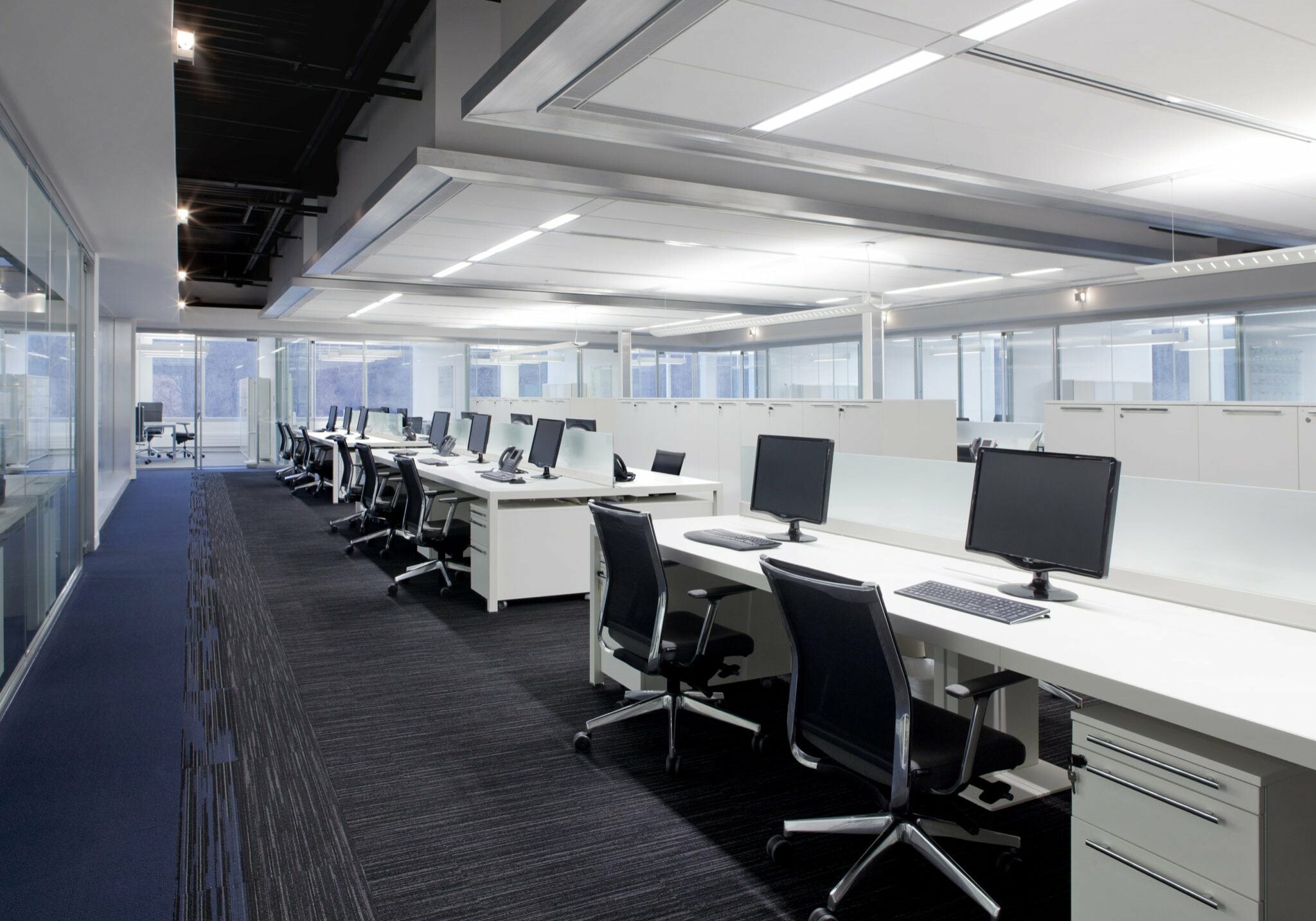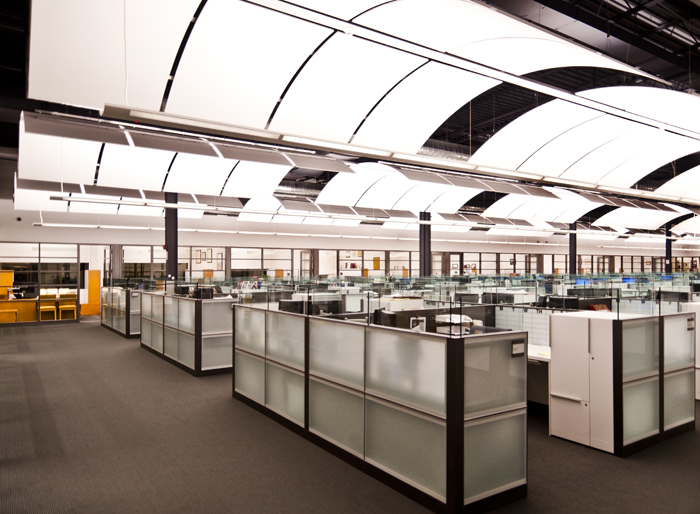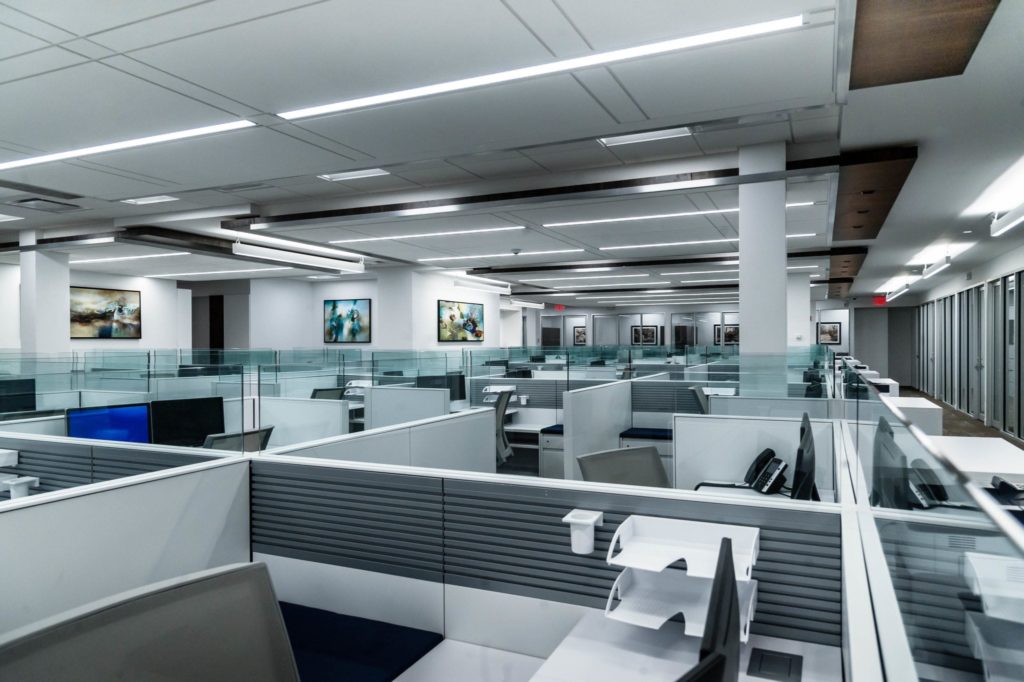
OFFICE WORKSPACE DESIGN
Take a minute to think about the physical space where you work. What elements make it a good or bad environment for productivity? Does the workspace architecture and its design elements contribute to work success or downfall? If so, why? These are some of the decision-making questions we take into account when designing workspaces for our clients. Each company does different work with different objectives and consequently requires different kinds of people to get the work done. It is important for the office workspace to fit the culture of the work that is being done within the space. Here at Mojo Stumer, we strive to use the best architectural and design tools to provide the most optimal workspaces for our clients.
PARKER WAICHMAN

The image above is from an attorney’s workspace in Long Island, NY. The high, arching ceilings allow for a sense of more space and less stress while working – encouraging more productivity for the employees below. Their space combines the high lofted ceilings with large glass windows on either side of the office to make the space more collaborative. By using white panels around the lights, we were able to bring another level of brightness to the office without needing direct natural sunlight. Getting creative in different workspaces to find the right level of modernity and functionality is rewarding for us.
ESQUIRE BANK HEADQUARTERS

Another great example of how Mojo Stumer enhanced office workspaces is the project we did for the Esquire Bank Headquarters in NYC. These are not your typical cubicles, we wanted to expand on the original thought of them and make something unique yet usable. The sidewalls of each office space have linear grooves that fit file holders and other functional gadgets to make storing things easier. Their glass partitions allow for easy communication with other people if needed, and their geometric design allows for ease of adjustment.
POINTS TO CONSIDER
When designing an office workspace, there are many different things to consider. Some of the more overarching questions revolve around what the space looks like, how large it is, and how open or private the client wants the office workspace to be. From there, the architect and interior designer can work on determining the best layout for the number of employees who need desk space, as well as taking into consideration the needs of the employees (number of outlets, placement of desks, types of technology needed, etc. The placement of restrooms and break stations/rooms is also important to consider when drawing up the plans for an office workspace.
Workspace architecture and office design have come a long way since the original cubicles and drop tile ceilings that we see in a lot of office buildings today. Mojo Stumer is constantly looking to go the extra mile to design beautifully functioning office workspaces with the employees in mind. By integrating various materials and providing logical layouts, our architects and interior designers have the ability to reshape the way an office building looks and functions in the best way possible. We strive to exceed client expectations every single time we put our pen to paper.
